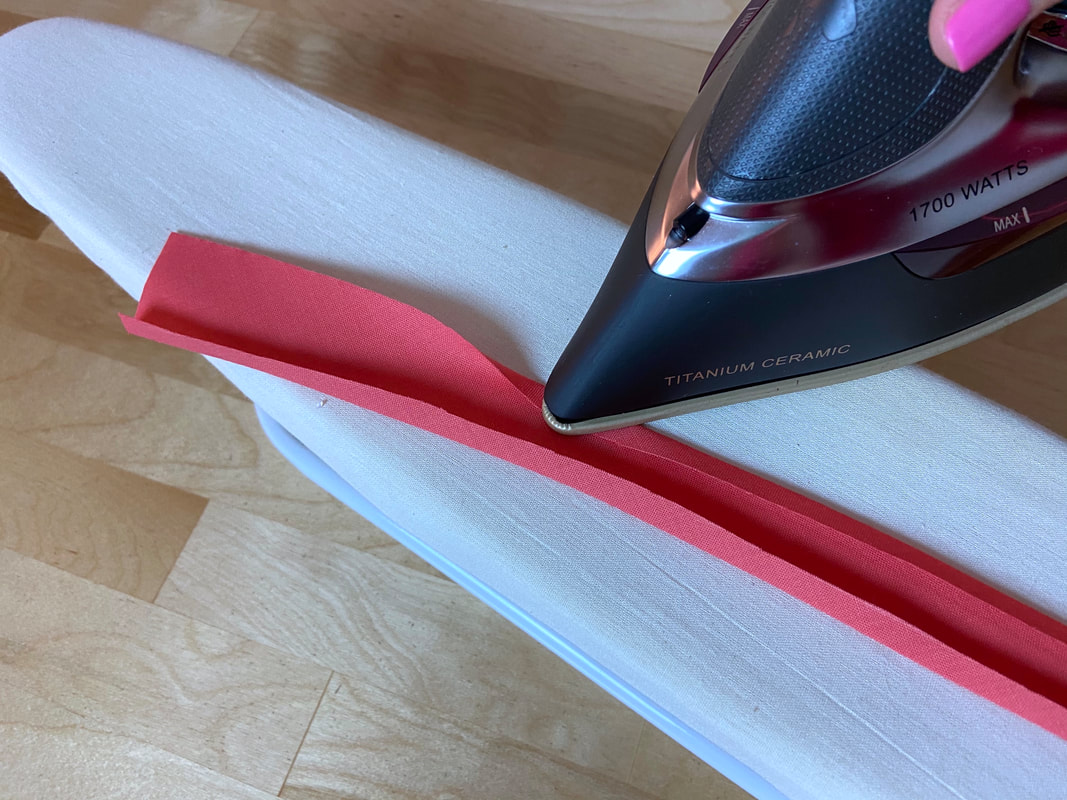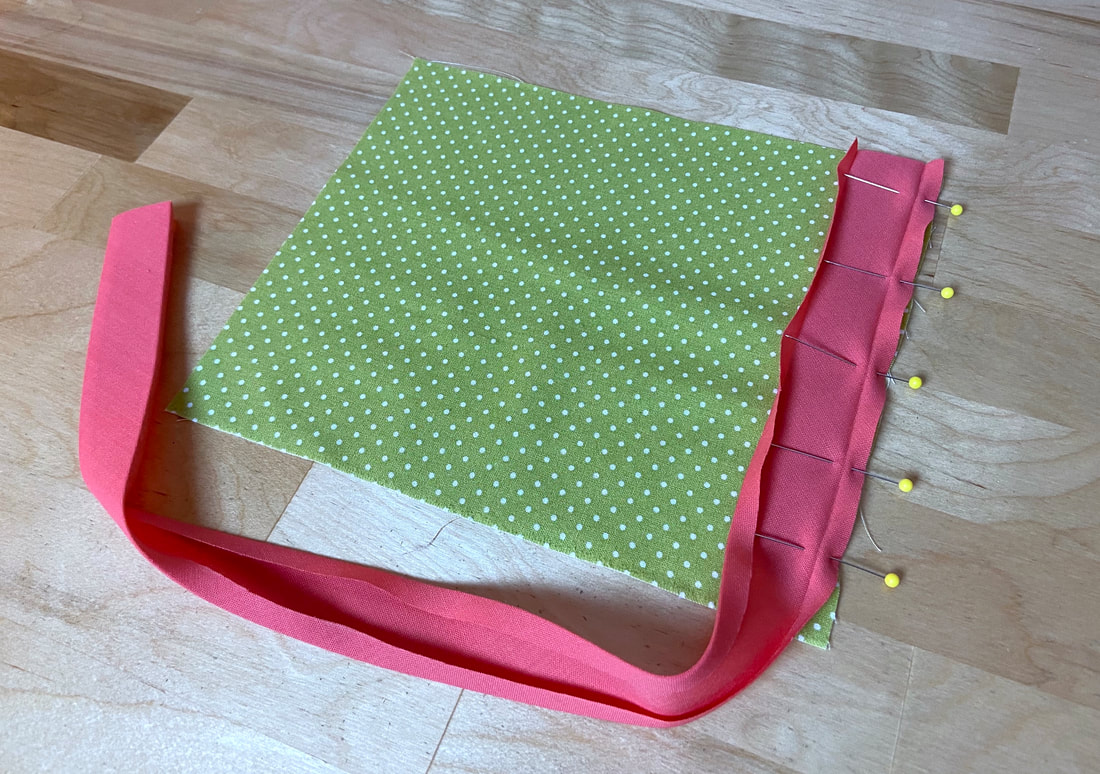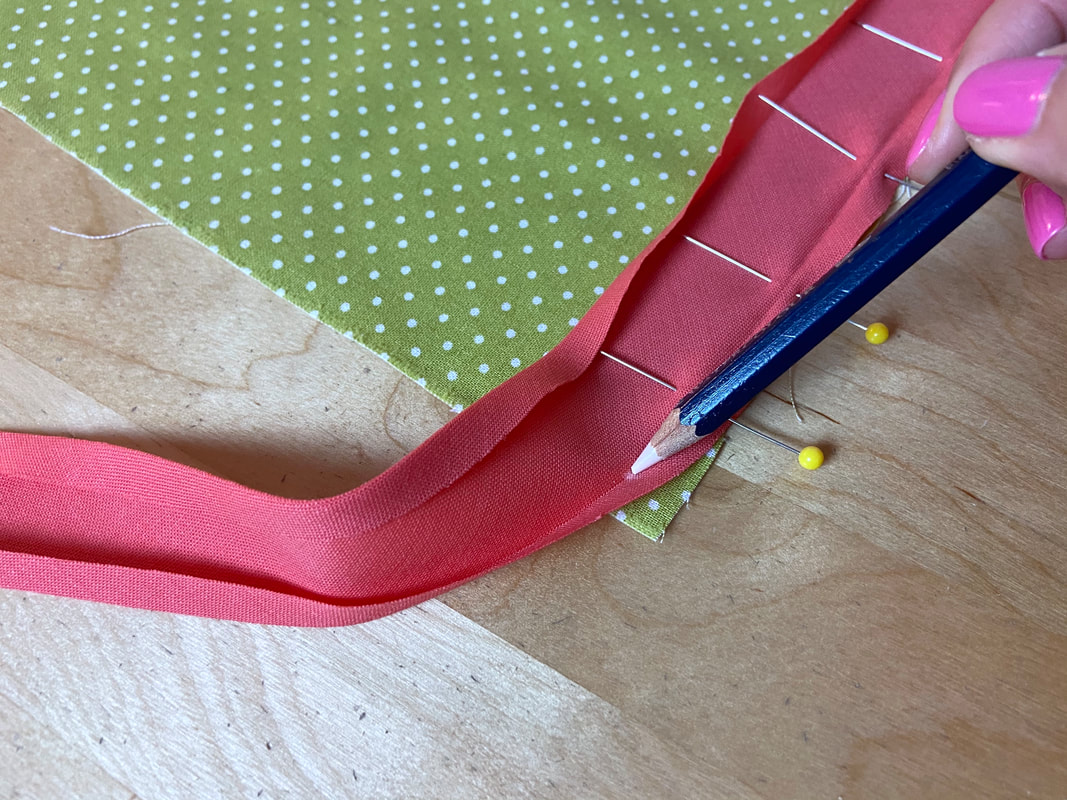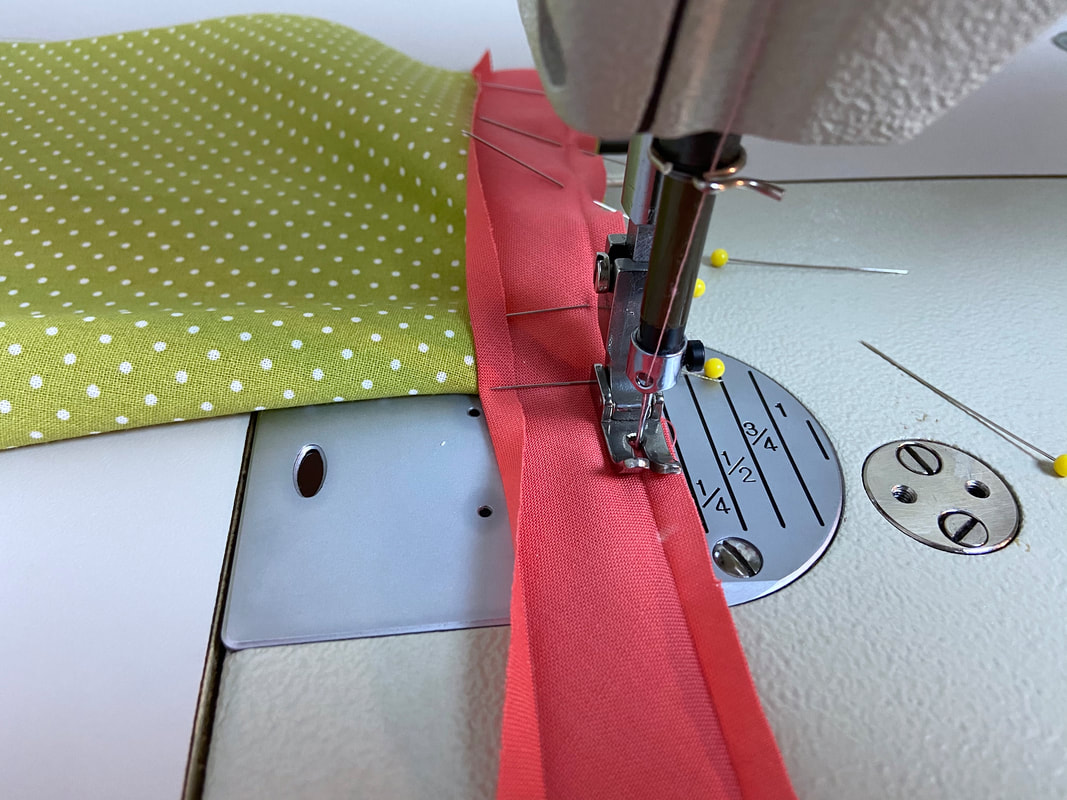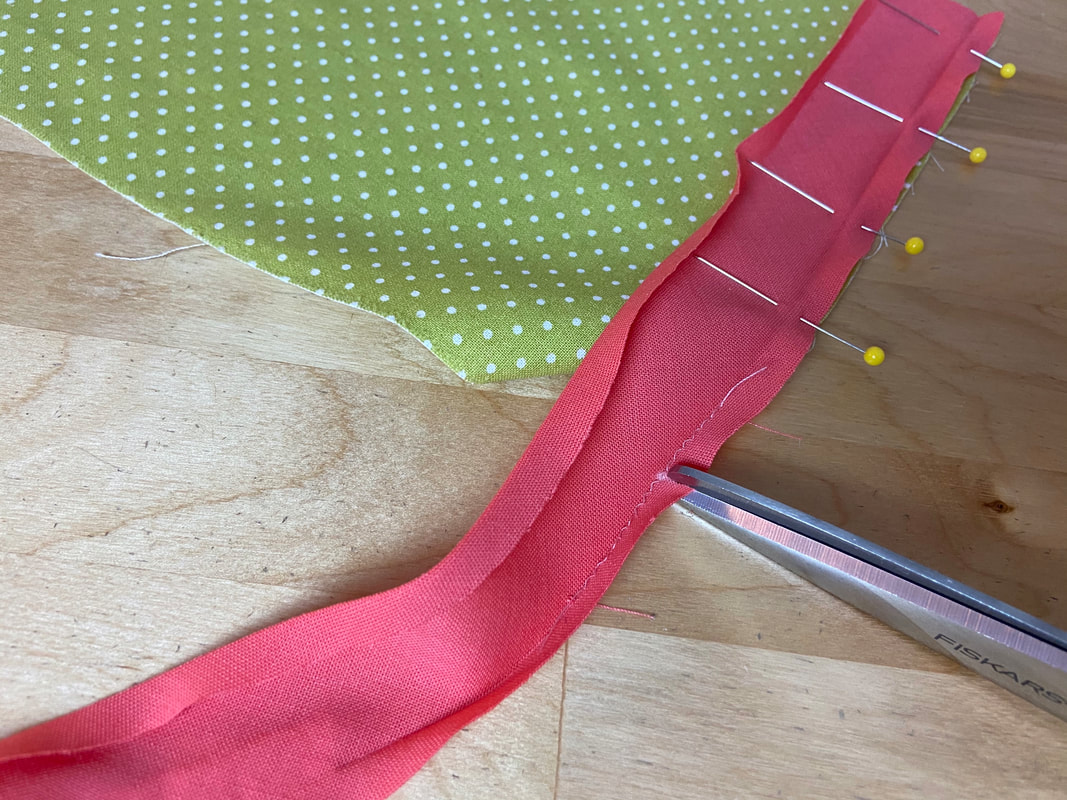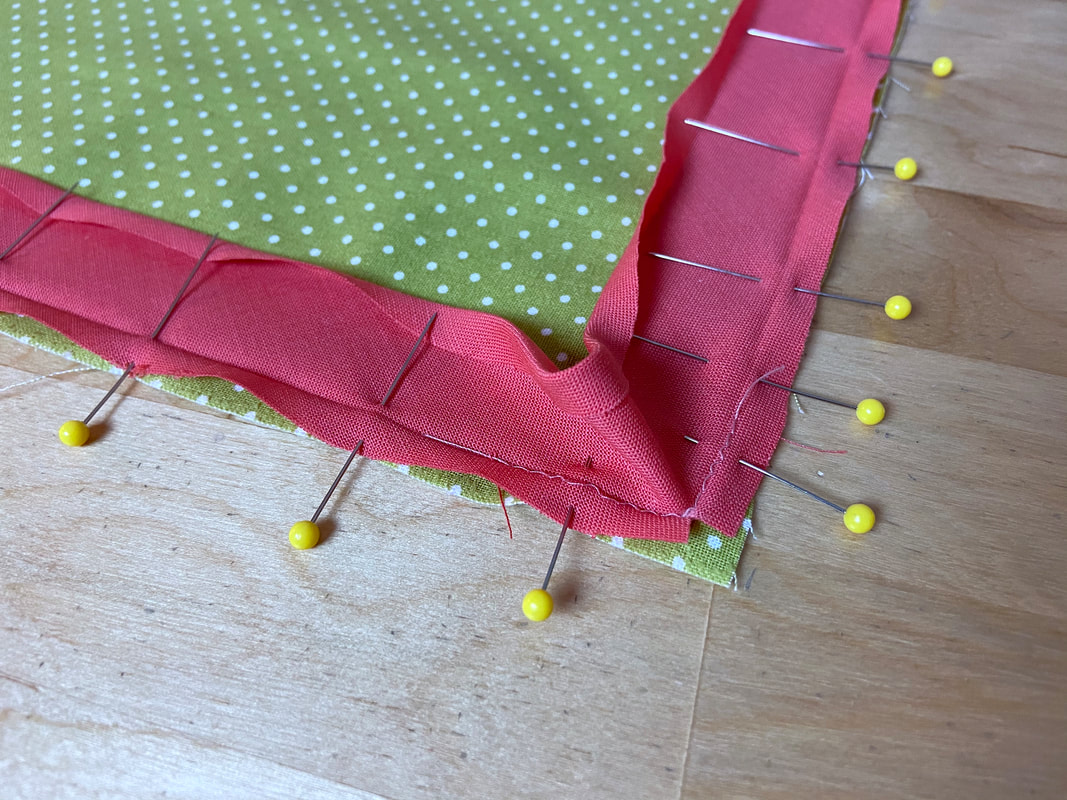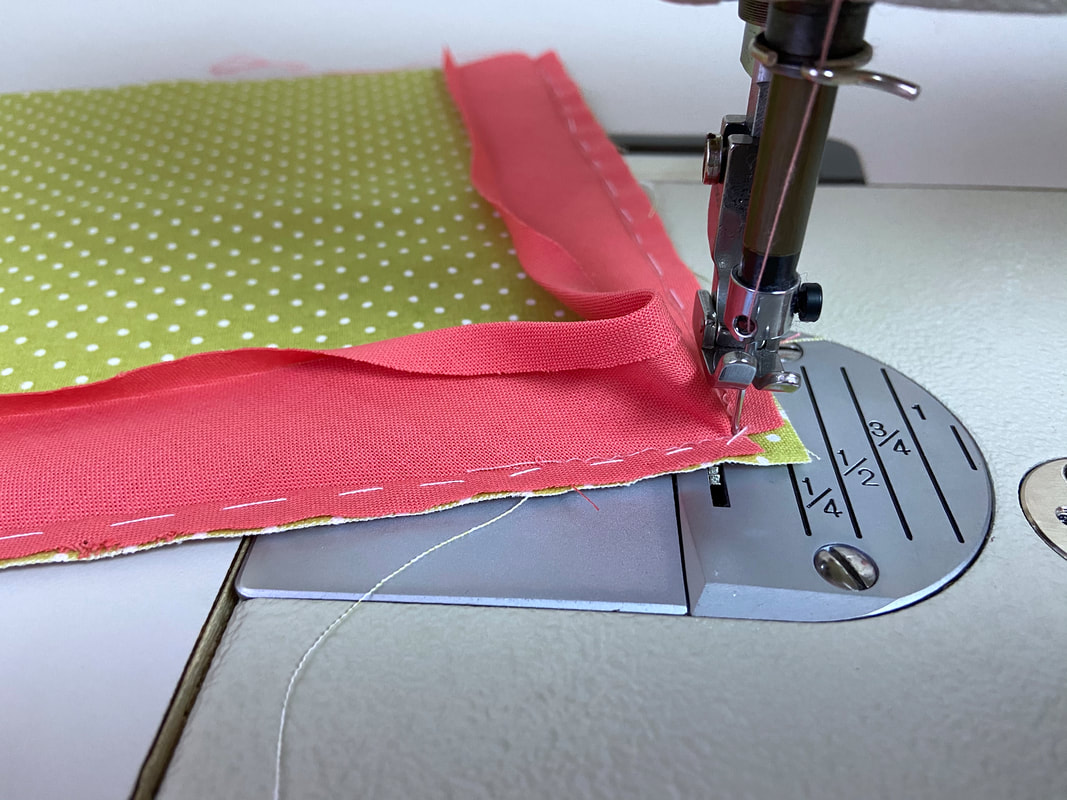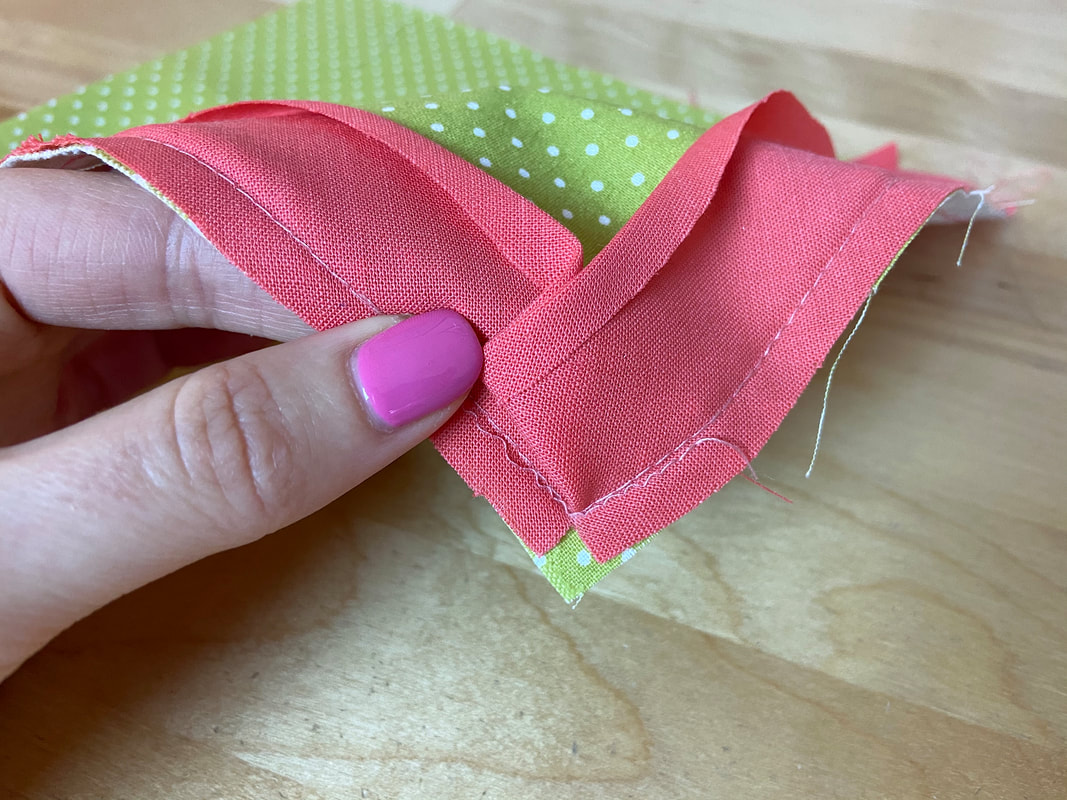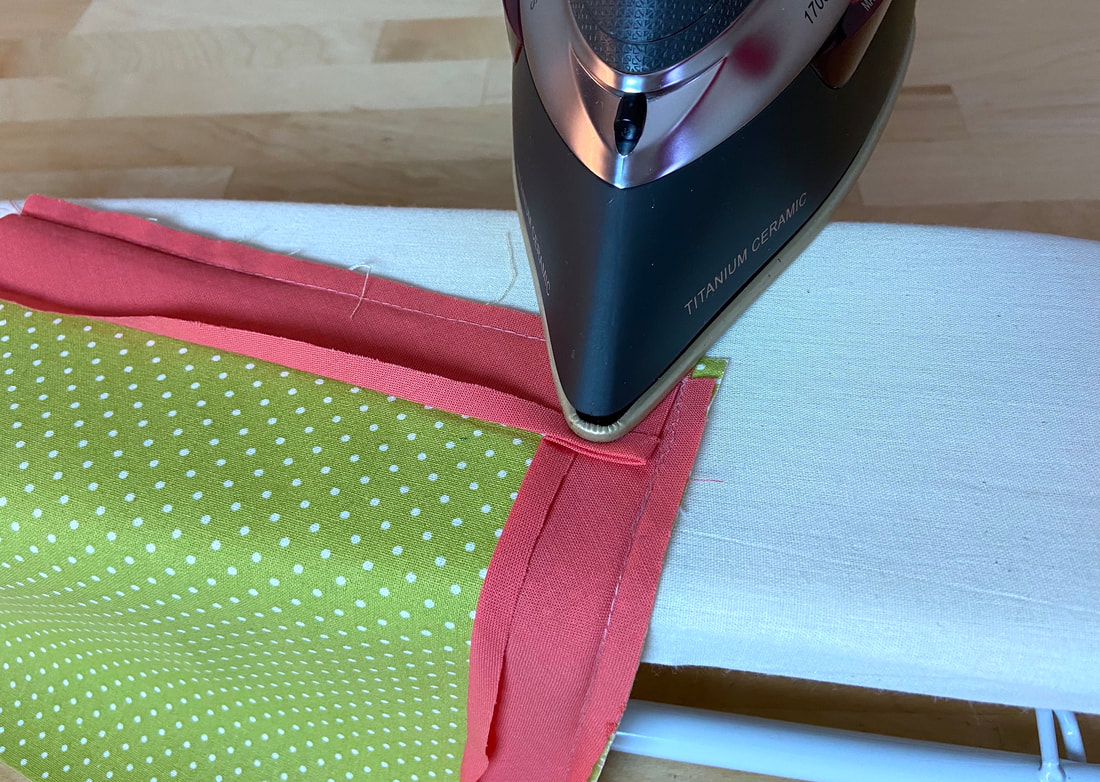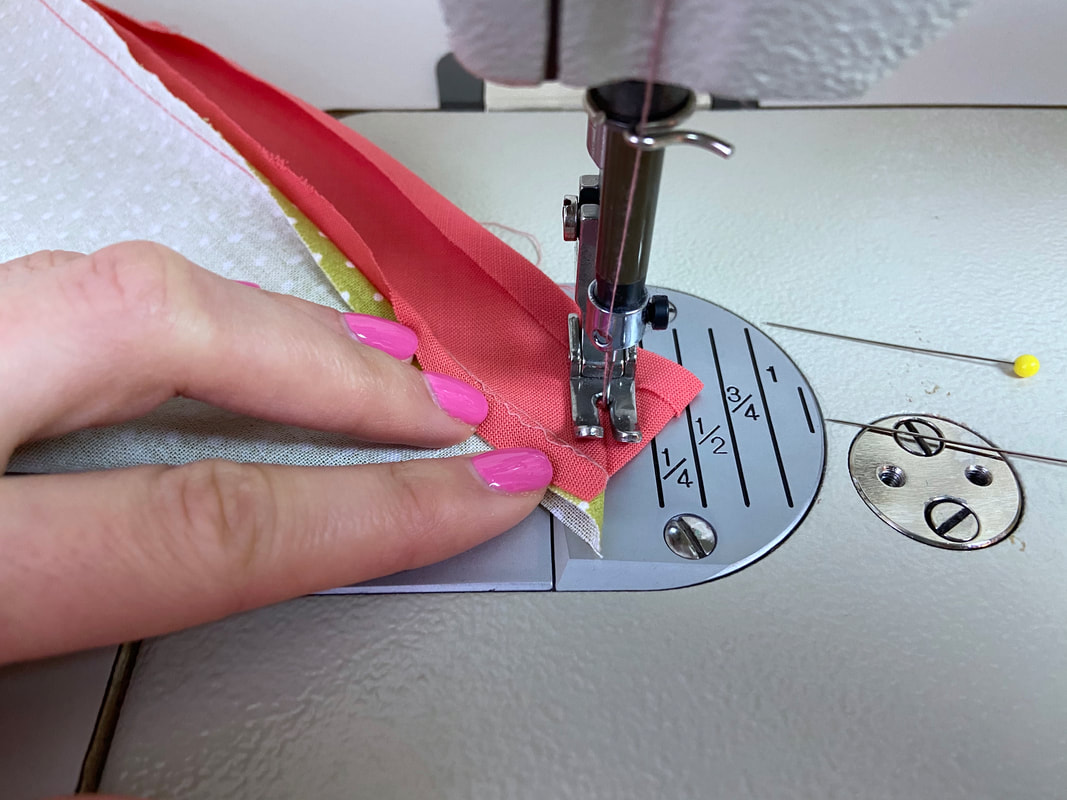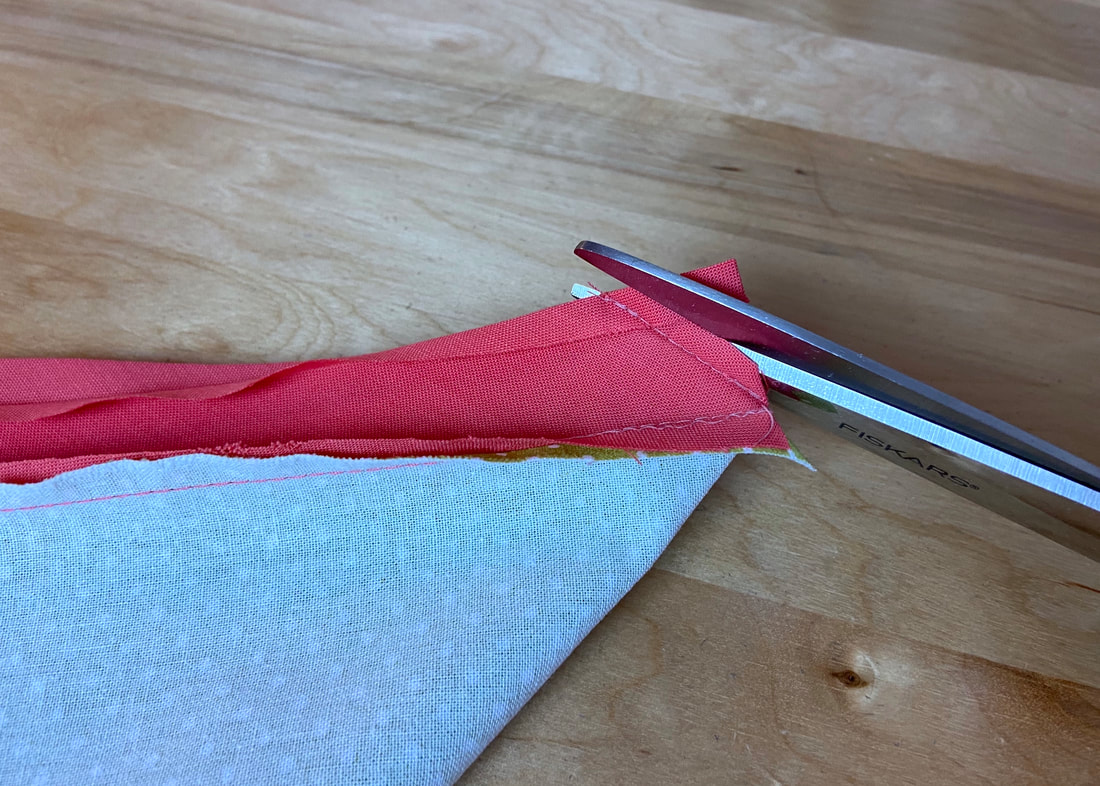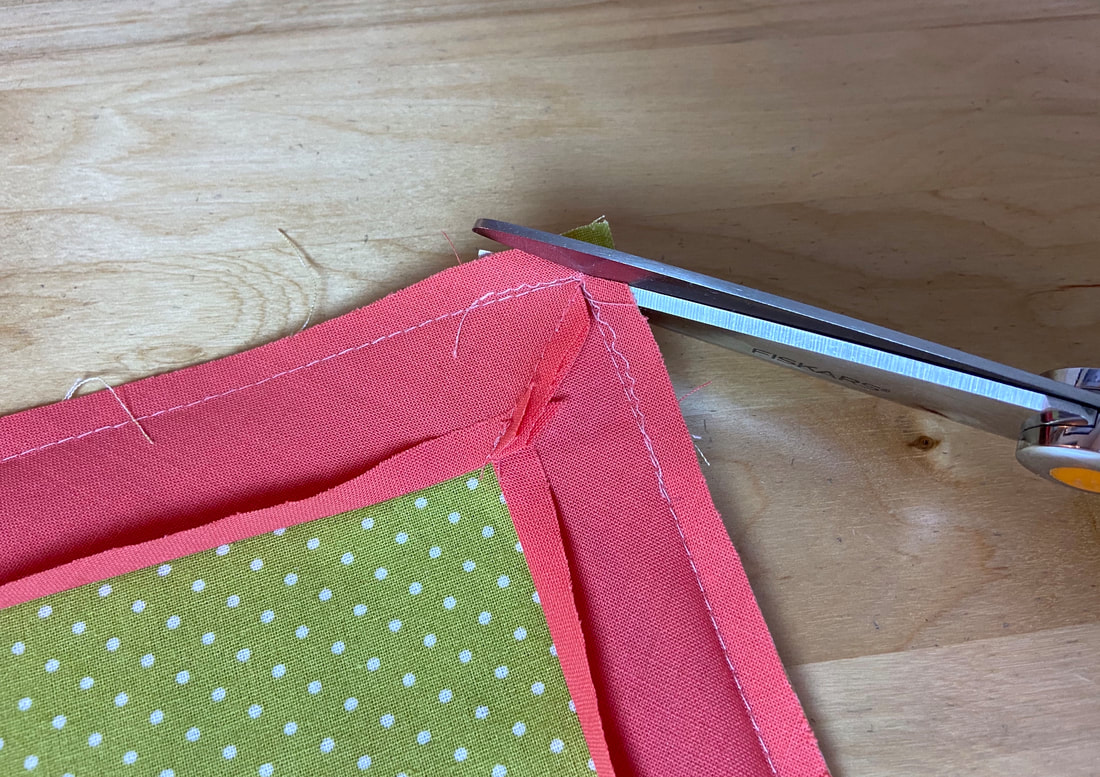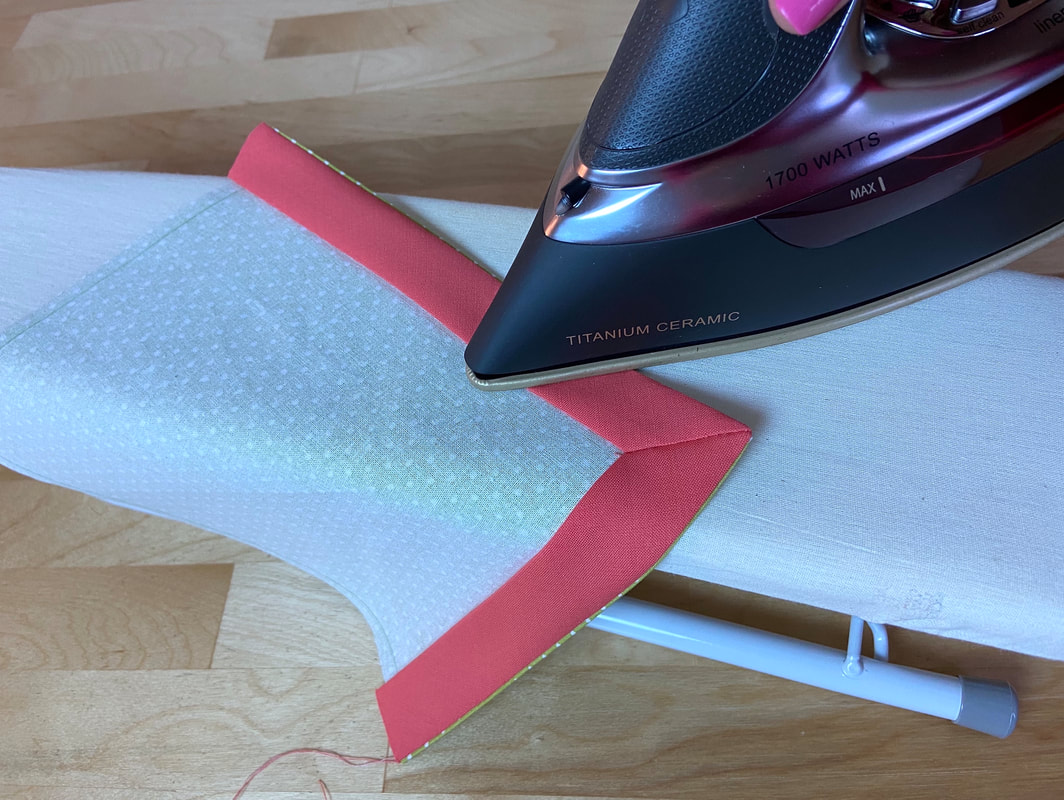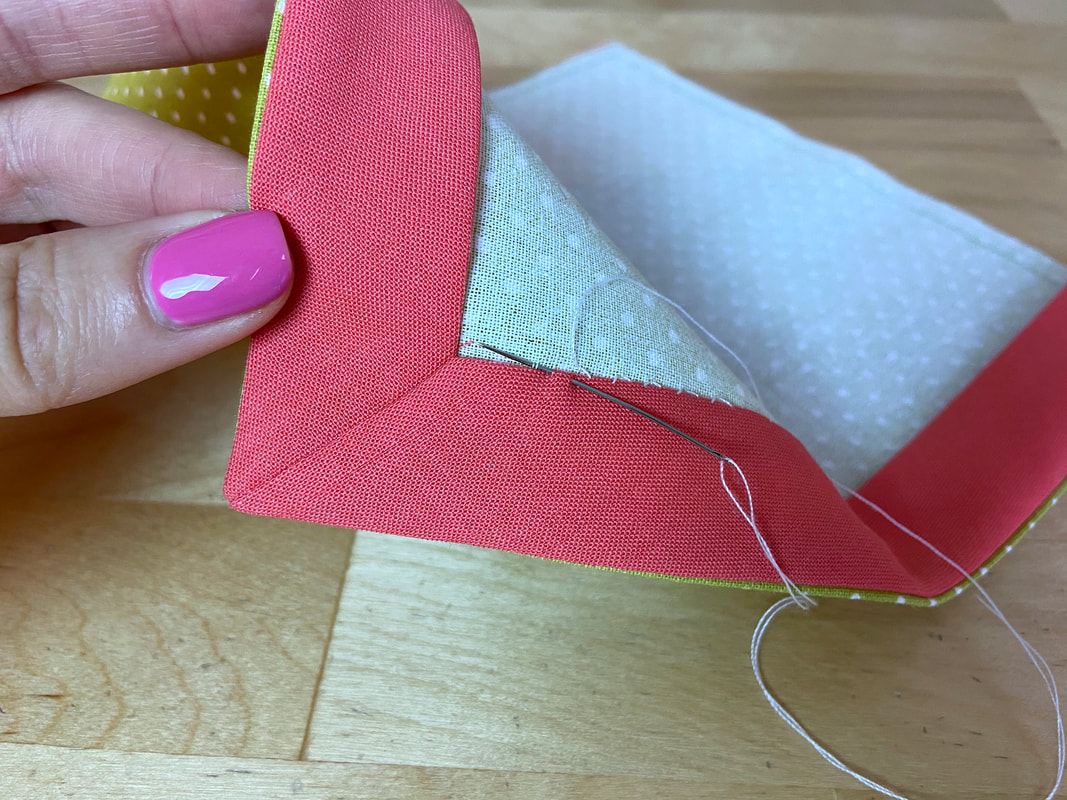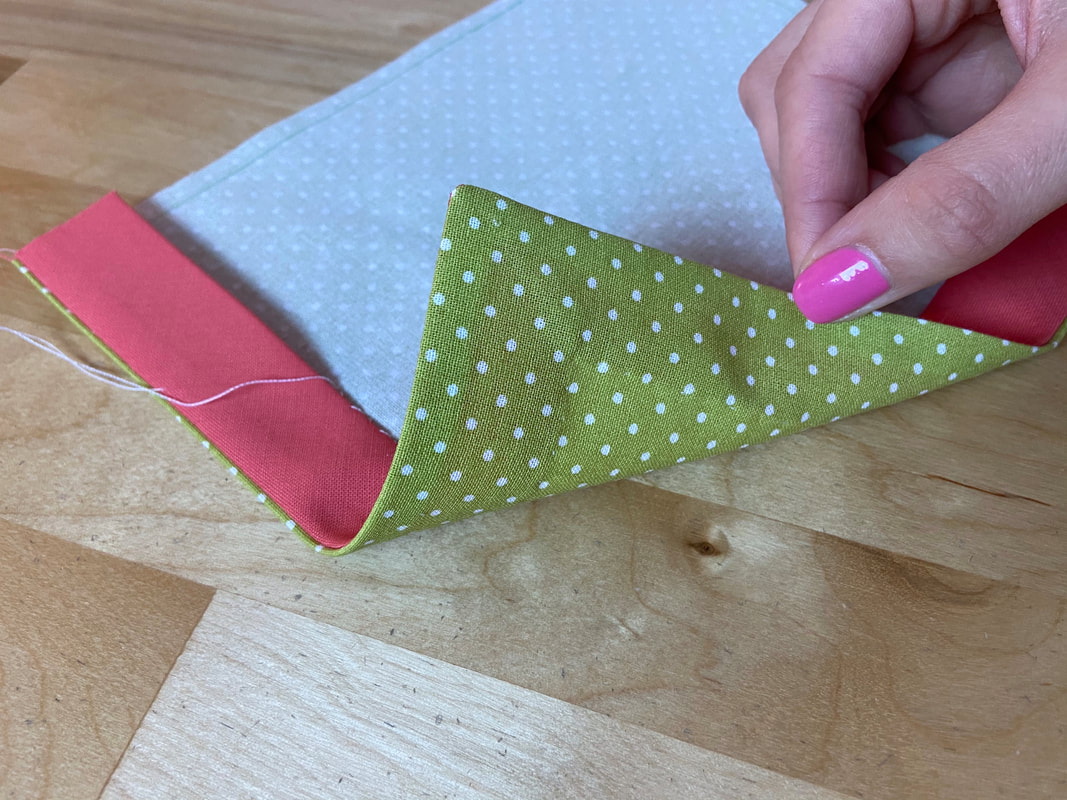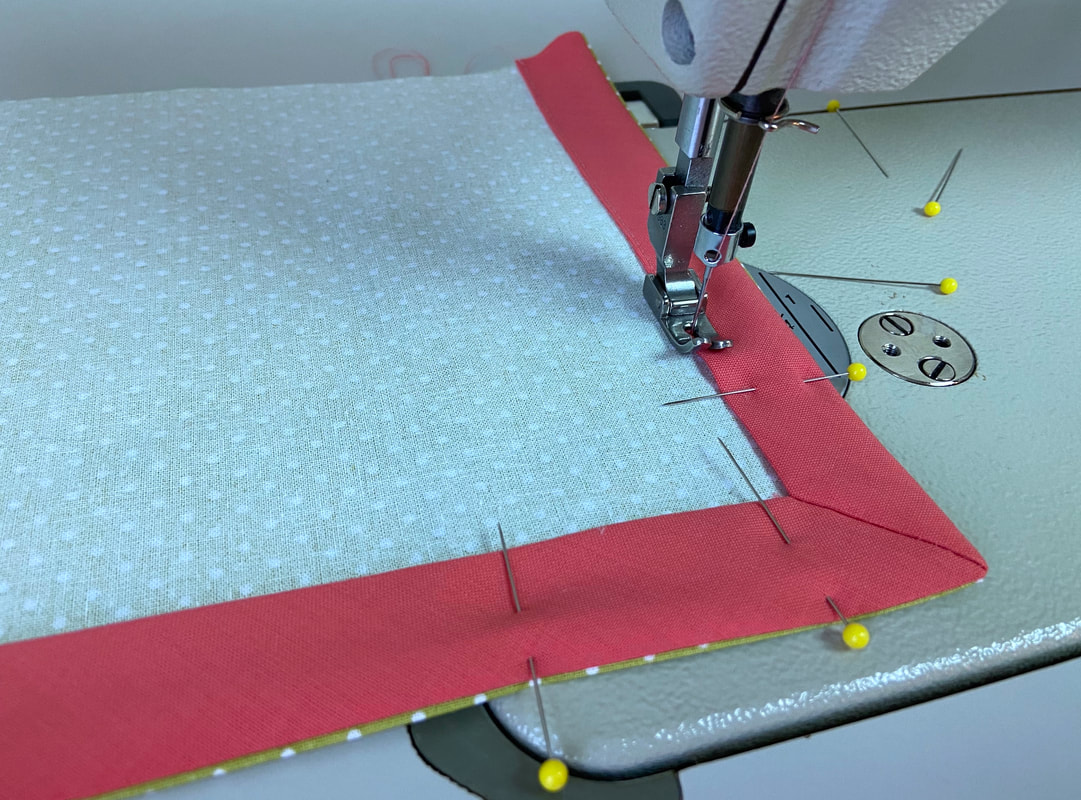Mini Tutorial: Finishing Fabric Corners With A Bias Strip
Mitering fabric corners with a bias strip is a semi-decorative technique you can easily sew at home using the fabric and color of your choice. All you have to do is measure, mark and cut the strips on the fabric bias.
Cut as many strips as you need to complete the vertical and horizontal edges intersecting the corner.
In this tutorial, the bias strip is cut at a 1.5" width.
Cut as many strips as you need to complete the vertical and horizontal edges intersecting the corner.
In this tutorial, the bias strip is cut at a 1.5" width.
1. Start by folding and ironing each of the strip's lengthwise edges at 1/4" to crease the fold lines. Fold these edges toward the wrong side of the bias strip - this is particularly important if your strip has connective seams and/or a differing right and wrong side.
2. Open one of the folded edges and align it to the corner's vertical edge with fabric face sides touching. Insert pins perpendicular to the edges up to the corner.
3. Mark the corner point on the bias strip (directly on the fold line). Before aligning the rest of the strip, apply a straight stitch at about 1" on each side of the marked point. This is called staystitching and will stabilize the corner area when the bias strip is clipped in the step to follow.
4. Clip the bias strip up to the marked point stopping right in front of the stitch. Be careful not to cut through the stitching.
5. Continue aligning and pinning the bias strip to the fabric's horizontal edge. Without the slash, the bias strip would not lay flat and be very difficult to transition to the horizontal edge.
6. Machine stitch the bias strip to the fabric, pivoting the stitch at a straight angle when arriving at the corner. It helps to use a hand basting stitch in lieu of pins, especially if working with flimsy, light fabrics.
Remove the hand basting once the stitch is applied.
Remove the hand basting once the stitch is applied.
7. Fold the bias strip excess down such that the resulting folded edge aligns with the horizontal stitch. Iron the folded bias strip flat in this position. The crease formed by ironing the bias strip in this position will provide a stitching guide in the step to follow.
8. Extend the bias strip away from the fabric corner and fold it onto itself with crease lines overlapping. Stitch the bias strip layers from the folded edge to the corner.
9. Trim the bias strip corner excess at about 1/4" away from the diagonal stitch as shown.
To further minimize bulk and eliminate tension, trim the seam allowance excess diagonally at the corner.
10. Bring the bias strip to the wrong side of the fabric to encase all fabric raw edges and expose the clean-finished corner. The bias strip will naturally align in position. Iron to flatten and smooth out the finished edges and mitered corner.
11. Last but not least, seal the bias strip's open edge by hand or by machine as desired. To complete the application by hand, slipstitch the folded edge to the fabric surface underneath, catching only 1-2 threads from the fabric's underside. A slipstitch is a blind stitching application that will result in no visible stitching on the fabric's right side.
If you prefer to finish the application by machine, stitch the bias strip following the inner folded edge as a guide. This technique will result in a visible topstitch on the corner's face side.

